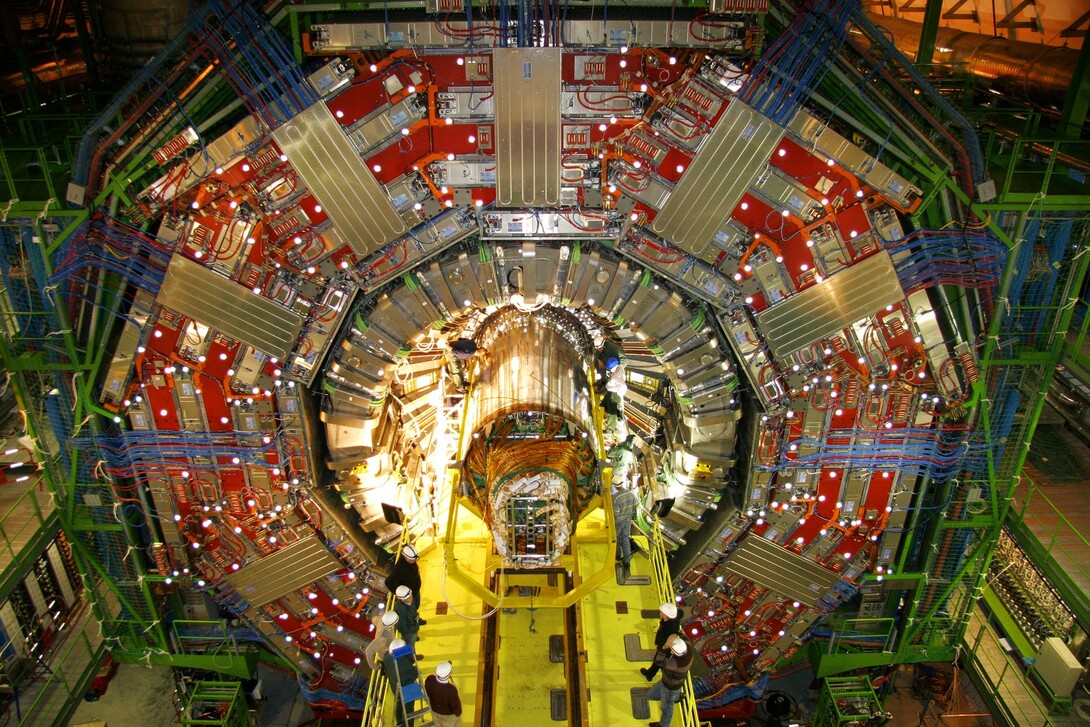
Only three people can share a Nobel Prize, but thousands of scientists played a role in the award for physics handed out early Oct. 8 – including a handful of UNL researchers.
The Nobel Prize in Physics was awarded to theorists Peter Higgs and Francois Englert in recognition of their theoretical discoveries on how particles acquire mass. In the 1960s, Higgs and Englert and other theorists published papers introducing key concepts in the theory of the Higgs field. In 2012, scientists on the international ATLAS and CMS experiments, performed at the Large Hadron Collider at CERN laboratory in Switzerland, confirmed the theory.
UNL’s experimental high-energy physics group and other UNL physicists, along with thousands of scientists around the globe, collaborated in the search for the Higgs boson particle. The university’s researchers played a part in the development of the CMS particle detector at CERN, and have provided data analysis for CMS experiments at its Tier-2 computing center, one of only seven in the nation.
“Our high-energy physics research group is extremely pleased to see Drs. Higgs and Englert recognized with this year’s Nobel Prize in Physics,” said Gregory Snow, founder of the UNL group and professor of physics and astronomy. “We feel part of this event, having contributed to the discovery of the Higgs boson, announced in July 2012, through our work the past several years on the CMS experiment.”
The discovery of the Higgs boson was groundbreaking – it further cements the Standard Model as the theory that explains the basic building blocks of matter and interactions of subatomic particles while ruling out other models and opening possibilities for new directions of study.
The UNL high energy physics team studies the fundamental constituents of matter through experiments at the world’s highest-energy particle accelerator laboratories, including work on CMS. Besides Snow, the UNL team includes faculty members Ken Bloom, Dan Claes, Aaron Dominguez and Ilya Kravchenko, plus several other researchers working in Lincoln, at CERN and at the Fermi National Accelerator Laboratory in Batavia, Ill.







